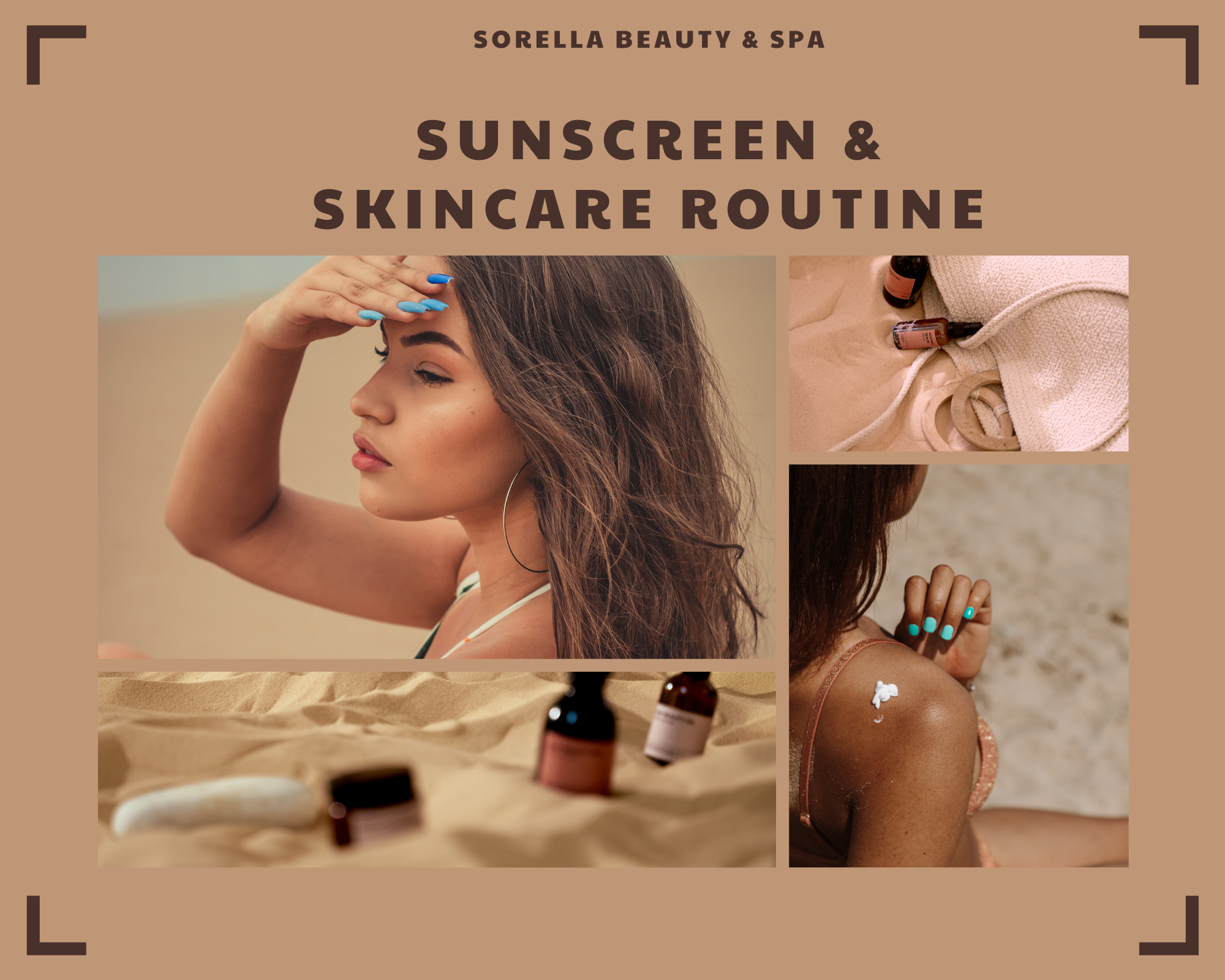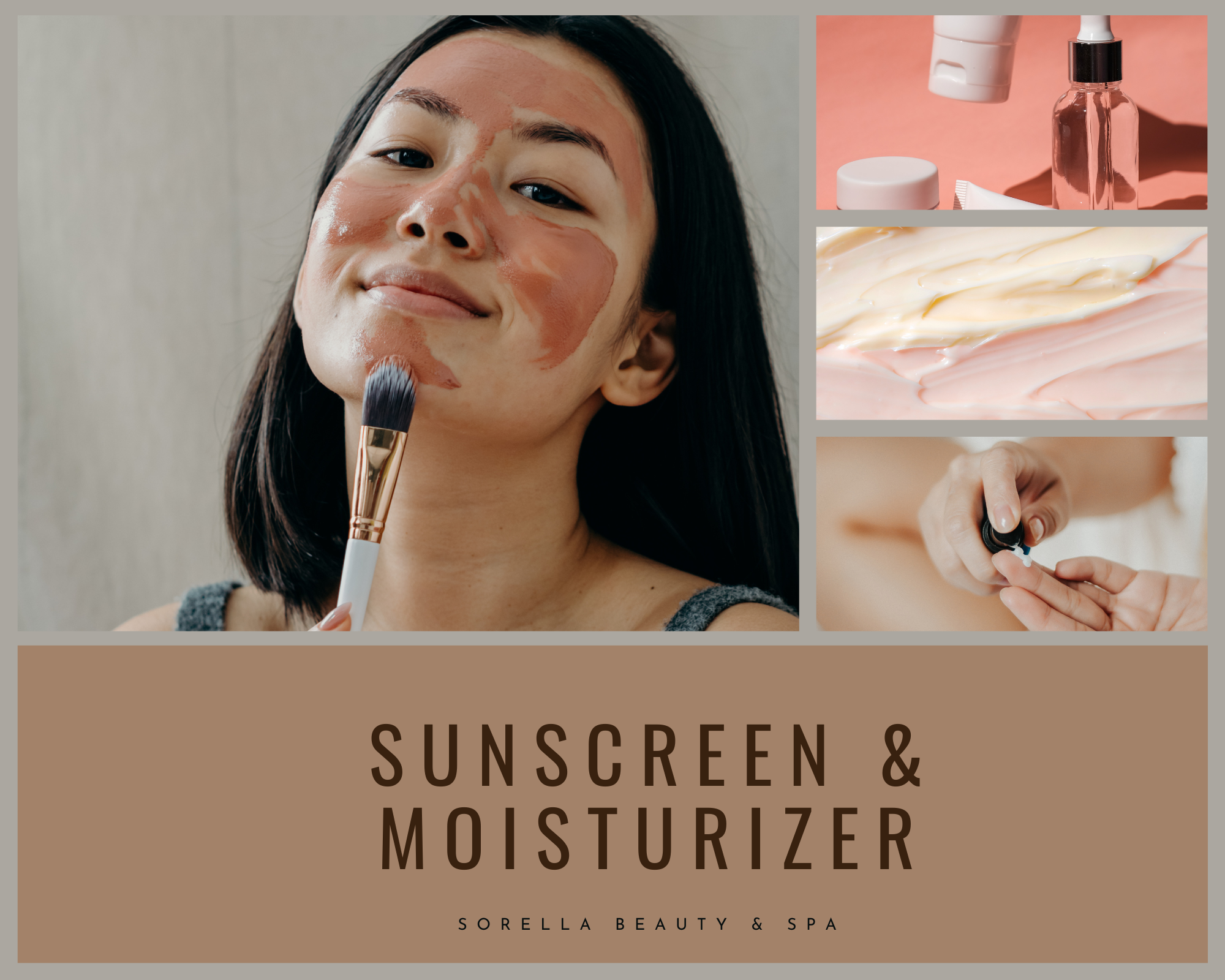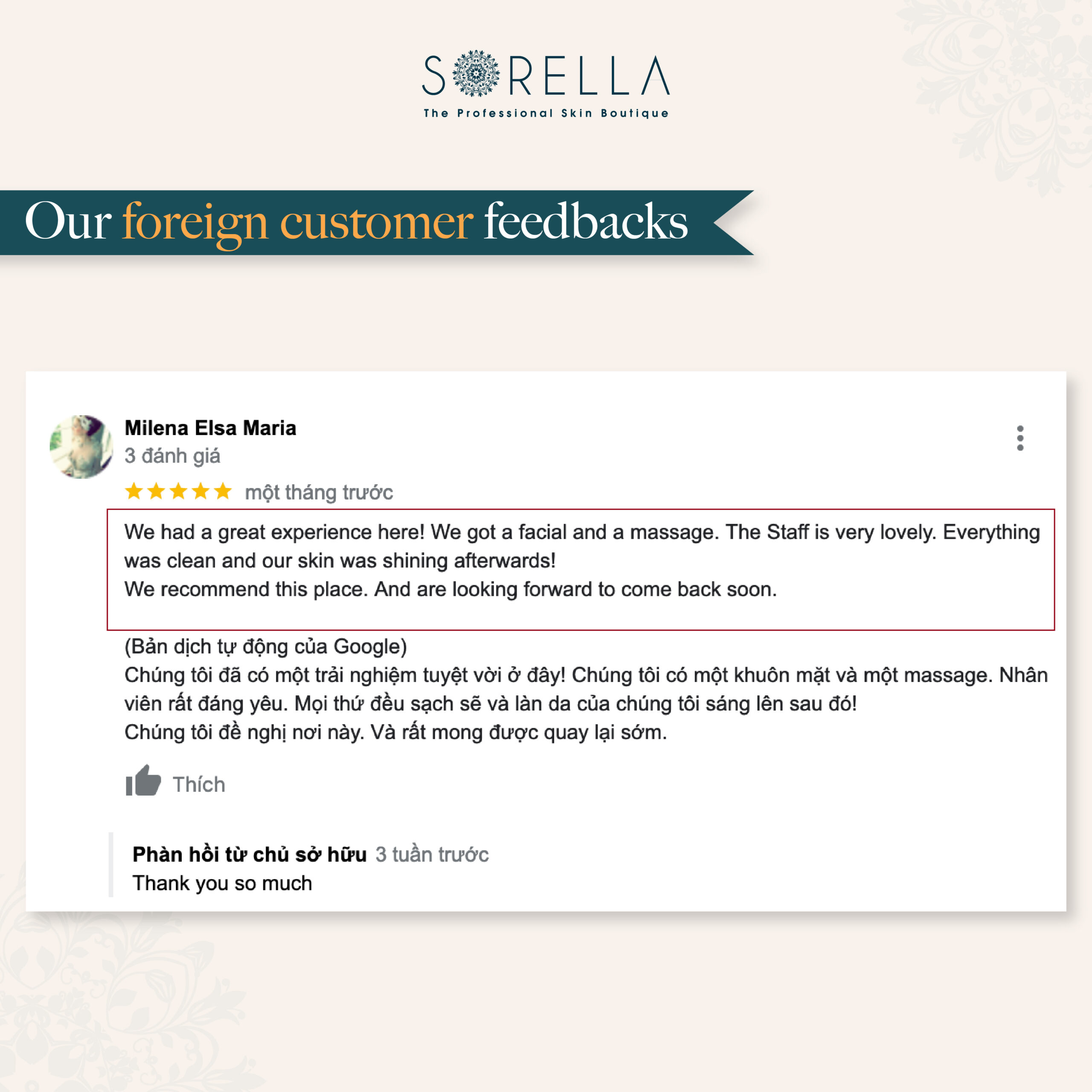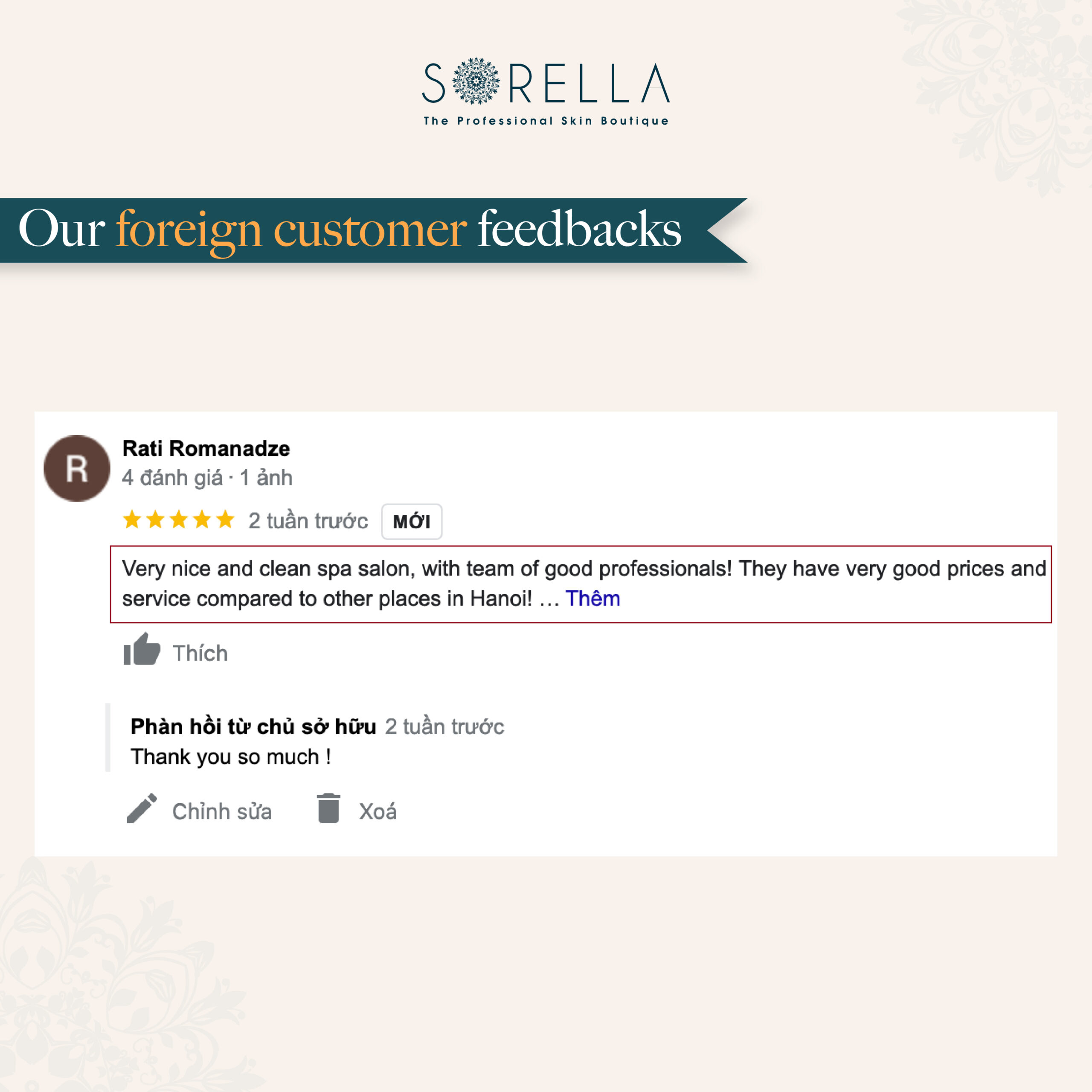Bí quyết làm đẹp
When Should You Use Sunscreen in Skincare Routine? 3+ Tips for Your Skincare Routine
Sunscreen in Skincare routine – Most of us are quite aware that suncare should be a non-negotiable part of everyone’s regimen. If you’ve been putting off incorporating SPF into your routine, now is the moment. You can also pat yourself on the back if you’ve already done so!
Yet, determining where to incorporate SPF into your skincare routine may be difficult, especially if you already have a lot of products to pour on.
We’re here to help you out. Continue reading to learn where SPF fits into your skincare routine and how much you should use.
Sunscreen in Skincare routine
Suncare product is designed to shield your skin from the sun’s UV rays, and it’s difficult to overstate how crucial this one product is for your skin. It is commonly stated that smoking and tanning beds are the two worst things you can do for your skin; missing sunscreen is right up there in terms of long-term harm.
UVA radiation penetrates the skin at all levels, from the epidermis to the dermis, and can harm the collagen and elastin fibers that maintain your skin taut and elastic. UVB radiation penetrates the epidermis and can induce photoaging, DNA damage, and the production of precancerous cells.

While skin cancer is the most dangerous consequence of solar damage, sun exposure may cause a variety of skin disorders. To begin, sunburn is a temporary – albeit unpleasant – ailment. Long-term sun exposure can also cause hyperpigmentation, dryness, leathery skin, and premature wrinkles.
Fortunately, you may avoid UV damage by limiting your exposure to the sun!
Staying in the shade, protecting your skin, and wearing a hat are all excellent precautions. In addition to these measures, wearing sunscreen every day is essential.
When should I use sunscreen as part of my skincare routine?
Incorporating sunscreen into your daily skincare routine is essential for protecting your skin from harmful UV rays, which can cause premature aging, sunburn, and increase the risk of skin cancer. Understanding the correct order and timing for applying sunscreen can significantly enhance its effectiveness and ensure your skin remains healthy and protected.
Sunscreen should generally be the final product you apply in your skincare routine. After cleansing your face, apply any toners, serums, and moisturizers first. These products need time to permeate the skin to provide their full benefits. By allowing each layer to absorb properly, you ensure that your skin is well-prepared to receive the protective layer of sunscreen.
It’s important to wait a few minutes after applying your most recent skincare product before applying sunscreen. This waiting period allows your skin to absorb the previous products fully, preventing any interference with the sunscreen’s ability to form an even and effective protective barrier on your skin.
If you’re getting ready for the day, consider using this time to do other tasks, such as styling your hair or preparing a cup of tea. This ensures that by the time you are ready to apply your sunscreen, your skincare products have had adequate time to absorb.
Once your skincare products have been absorbed, you can apply your sunscreen. Make sure to use a generous amount, covering all exposed areas of your skin evenly. Applying sunscreen as the last step in your routine ensures that it can form an effective barrier against UV rays, without being diluted or disrupted by other products.
In addition to the morning routine, remember to reapply sunscreen throughout the day, especially if you are spending extended periods outdoors. Reapplication is crucial because the effectiveness of sunscreen diminishes over time due to factors like sweating, swimming, and sun exposure. By making sunscreen a non-negotiable part of your daily skincare routine, you provide your skin with the essential protection it needs to stay healthy and youthful.

Is it OK to apply in the morning and leave it on for the rest of the day?
No. However, sunscreen is not effective all day and will deteriorate (break down and become less effective) as you use it. Use sunscreen every 90 minutes to 2 hours, and at least 15-30 minutes before going outside. Reapply it soon after rinsing or towel-drying if you’re swimming or sweating.
What amount of suncare products should I put on my face?
The effectiveness of your sunscreen is heavily impacted by the amount you apply. The Cancer Council advises 5mL “for each arm, leg, body front, body back, and face (including neck and ears)” for adults. If you do your entire body and face, that comes to 35mL (about seven tablespoons).
Should I use my usual moisturizer over or under my sunscreen?
The type you choose will determine when you apply it throughout your skincare routine. Use a chemical sunscreen before your moisturizer since it takes time to soak into the skin.
Because physical or “mineral” suncare creates a veil or filter over your skin, they should be applied after your moisturizer.
Is it better to apply sunscreen before or after moisturizing?
For the record, SPF should be used after your moisturizer (and any other skincare, for that matter)! The last skincare product you apply should be SPF.

Are you going to put on makeup? When your sunscreen has been absorbed, apply your glam.
Can I mix suncare products and moisturizer?
Can I mix suncare products and moisturizer? Combining suncare products, like sunscreen, and moisturizer is a popular topic in the skincare community. Influencers often share their routines and tips, leading to widespread discussion and experimentation. While some believe that mixing these products can provide a smoother, more radiant finish to the skin, dermatologists and skincare experts advise against it for several reasons.
The primary concern with mixing sunscreen and moisturizer is the potential dilution and weakening of the sunscreen’s efficacy. Sunscreen is formulated to provide a specific level of protection against the harmful effects of UV radiation. When mixed with other products, especially those not designed to complement the sunscreen’s function, the protective qualities can be compromised.
Sunscreens need to be applied evenly and in sufficient amounts to be effective. The recommended amount for the face and neck is approximately a nickel-sized dollop. When you mix sunscreen with moisturizer, it becomes challenging to ensure that you are applying enough of the sunscreen to achieve the advertised level of protection. This can lead to uneven coverage, leaving some areas more vulnerable to UV damage.
Sunscreen formulations are meticulously designed to maintain stability and effectiveness. Many sunscreens contain UV filters that can be sensitive to the presence of other ingredients. Mixing with a moisturizer can lead to chemical interactions that degrade the UV filters, reducing their ability to protect your skin.
This is especially pertinent with chemical sunscreens, which rely on the absorption of UV radiation and conversion into heat. The efficacy of these filters can be significantly impacted by the presence of additional moisturizing ingredients.
For optimal skincare and sun protection, it is recommended to apply sunscreen and moisturizer as separate steps. Here’s a suggested routine: Start with a clean face to ensure that the products you apply can be absorbed effectively. Apply your regular moisturizer to keep your skin hydrated and maintain the skin barrier.
After the moisturizer has been absorbed (usually after a few minutes), apply a generous amount of sunscreen. Ensure it is spread evenly across all exposed areas. If you use makeup, it should be applied after the sunscreen.
If you prefer a more streamlined routine, consider using products that are formulated as a moisturizer with built-in SPF. These products are designed to offer the benefits of hydration while providing adequate sun protection. However, it’s important to check the SPF rating and ensure that it meets the recommended levels for effective protection. Dermatologists generally recommend using a product with at least SPF 30 for daily use.
While the convenience of combining suncare products and moisturizer is appealing, it’s crucial to prioritize the efficacy of sun protection. Sunscreen is a critical component in preventing skin damage, premature aging, and skin cancer. By applying it separately and correctly, you ensure that your skin receives the full benefit of its protective properties. For those seeking convenience, opt for a well-formulated moisturizer with SPF, but always ensure it provides adequate coverage and protection.
Is the SPF in my makeup sufficient?
While foundation contains SPF, it should be used in conjunction, not as a replacement. These hybrid products often include relatively few UV-blocking chemicals. To be successful, you would have to apply a lot of it, to the point that your skin looks unnaturally cakey.
Should I use face oil before or after applying suncare products?
Again, this is dependent on the sort of suncare you use. Use a chemical sunscreen before your face oil to allow it to penetrate correctly. If you’re using mineral sunscreen, first apply your face oil, then wait 2-3 minutes before applying your SPF.
Can I reapply sunblock while wearing makeup?
Can I reapply sunblock while wearing makeup? Reapplying sunscreen while wearing makeup is crucial for maintaining protection against harmful UV rays throughout the day. Although it may seem challenging, there are several methods to make this process more manageable without disrupting your makeup.
Firstly, consider using a powder sunscreen. These products are specifically designed for easy reapplication over makeup. They come in a compact form with a brush applicator, allowing you to dust the powder over your face, adding a layer of sun protection without affecting your makeup. Powder sunscreens are convenient and can help absorb excess oil, keeping your skin looking fresh.
Another effective option is to use a sunscreen mist or spray. These products are formulated to be lightweight and can be sprayed over your makeup. Hold the bottle at a distance from your face and spray evenly. Sunscreen mists are easy to carry in your bag, making them ideal for on-the-go reapplication. Ensure you cover all exposed areas, and let the mist dry naturally without rubbing it in.
Sunscreen sticks are also a practical choice for reapplication over makeup. These sticks are solid, allowing for precise application. Gently swipe the stick over your skin, focusing on areas most exposed to the sun, such as your forehead, nose, and cheeks. Pat the product lightly with your fingers to blend it into your skin, ensuring it doesn’t disturb your makeup.
If you prefer a more traditional approach, you can use a makeup sponge to reapply a liquid or cream sunscreen. Dispense a small amount of sunscreen onto the sponge and gently dab it over your makeup. This method requires a bit more care to avoid smudging, but it ensures thorough coverage.
Should I reapply sunscreen after washing my face?
It depends on the time of day; if you’ll be exposed to the sun after washing your face at any point, the answer is yes: reapply suncare. For instance, cleaning your face before going to the gym at noon. But if you’re cleaning your face at the end of the day, there’s no need! Just go about your nightly routine as usual.
Here’s how to stack your skincare products included in the proper order:
- Cleanser
- Exfoliant (if using one)
- Serum
- Mist (if using one)
- Moisturiser
- SPF
- Makeup
Overview
Consider the type of products you use when determining when to apply it throughout your skin-care routine.
Physical sunscreens are preferred by us since their natural, mineral-based compositions are gentler on our skin and the environment. Chemical sunscreens, on the other hand, contain potentially dangerous chemicals such as oxybenzone. These pollutants can cause health problems and contribute to coral bleaching in our seas, which is a significant issue for aquatic life.
While chemical sunscreens might be difficult to apply, physical sunscreens have a simple rule of thumb: apply it last whenever feasible.
Suncare products should be the last step in your skincare process, although they may be used under makeup. Another thing to keep in mind is that once you’ve applied sunscreen, you’ll want to disturb it as little as possible.
When you apply correctly, your entire routine will function better in the long run. The best part is that your skin will appreciate you for the protection whether it’s in 10 or 20 years.
Tư vấn chuyên môn bài viết:
TS.BÁC SĨ NGUYỄN HỮU QUANG
Here are the articles that Sorella shares about beauty knowledge you can refer to:
Lip Spray Process – 2023 Latest Lip Tattooing Technologies
Top 10 Spas in Vietnam to Refresh Your Soul
Acne: 13 Home Treatments for Pimples to Help You Get Rid of Acne
Experts predict 6 skincare trends to watch for in 2023
Bài viết cùng chủ đề:
-
Nên lựa chọn Rejuran hay Karisma?
-
So sánh Karisma và Profhilo – 2 phương pháp trẻ hóa da tầng sâu đỉnh cao
-
Cách diệt chấy rận hiệu quả ngay tại nhà, 8 phương pháp tiêu diệt chấy rận hiệu quả
-
Có nên dùng khăn ướt để tẩy trang? Cẩn thận khi dùng khăn giấy ướt giúp chăm sóc làn da của bạn, 1 vài thành phần của giáy ướt có hại cho da


 中文 (中国)
中文 (中国) 한국어
한국어 English
English









